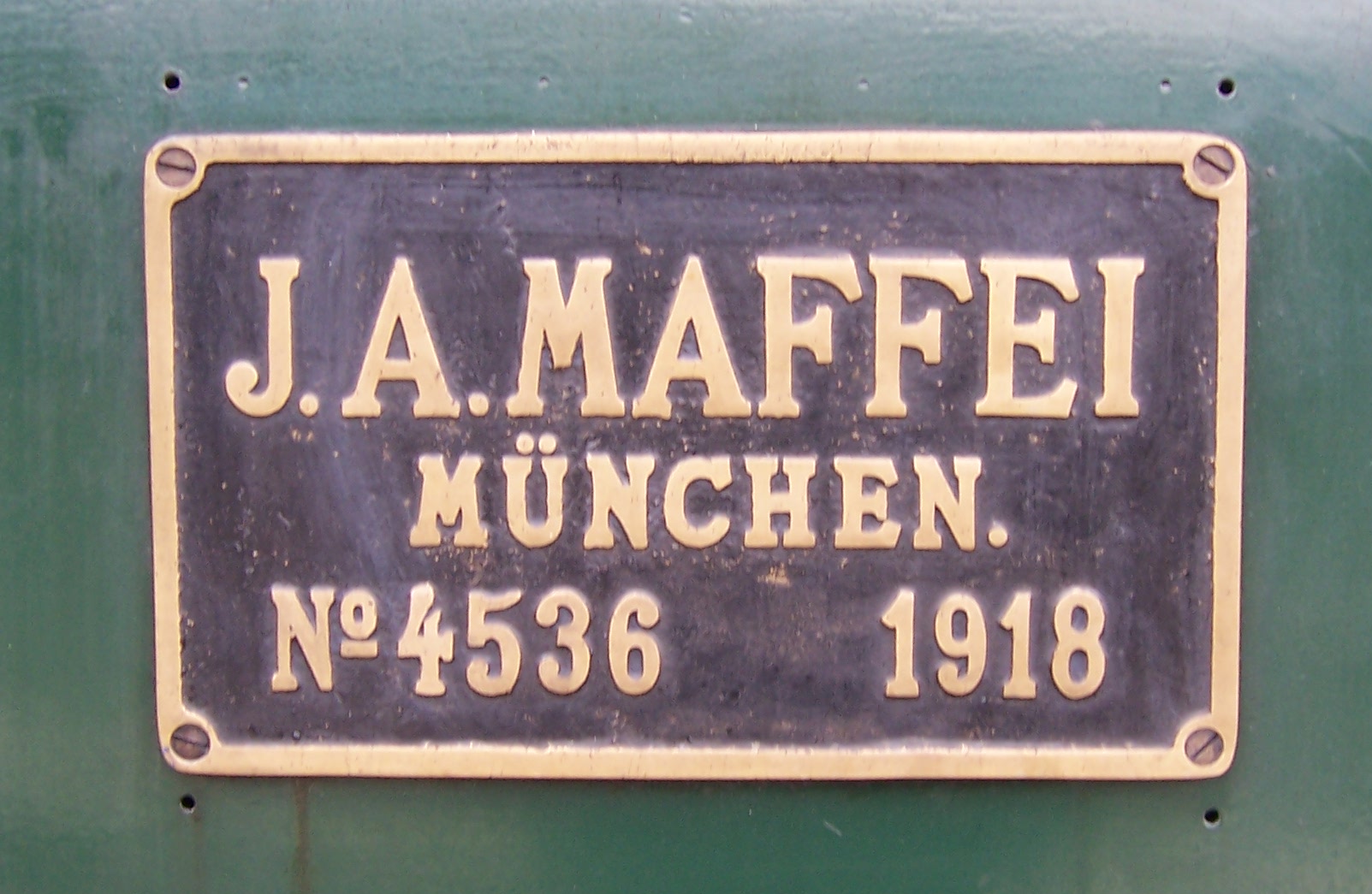|
Bavarian C III (Ostbahn)
The Bavarian Class C, later C III, waw a German steam locomotive with the Bavarian Eastern Railway (''Bayrischen Ostbahn'') and Deutsche Reichsbahn. From 1867 a total of 152 examples of this engine were built in Bavaria for the ''Ostbahn''. The five series differed in their dimensions from one another. They had larger grate and heating areas than their predecessor engines, the Class C II. In addition the drive was to the middle axle, so that shorter connecting rods could be used. The locomotives had an Allan valve gear and injectors. Retirement began after 1905. In 1920, 49 machines were still left. The Reichsbahn recorded 35 of the 38 remaining engines in 1923 and gave them the numbers 53 7835 to 53 7864. However, by 1925 they were no longer on active duty. Three engines went as reparations to the Belgian State Railways. The locomotives were equipped with 3 T 9 and 3 T 9.5 tenders. See also *Royal Bavarian State Railways *List of Bavarian locomotives and railbuses ... [...More Info...] [...Related Items...] OR: [Wikipedia] [Google] [Baidu] |
Maffei (company)
Maffei was a manufacturer of railway locomotives based in Munich, Germany. Established in 1836, it prospered for nearly a century before going bankrupt in 1930 and becoming amalgamated with the firm of Krauss to form Krauss-Maffei. Following another seventy years of prosperity Krauss-Maffei merged with Demag and Mannesmann in 1999, the resulting conglomerate in turn being sold to Siemens AG. Perhaps J. A. Maffei's most famous product was the S3/6 4-6-2 locomotive of 1908. In 1836, Joseph Anton, Ritter von Maffei established the "J. A. Maffei" locomotive works in the English Garden district of Munich. The aim was to make Bavaria competitive in the machine industry. From these small beginnings a world-renowned locomotive works eventually developed. In 1864 they delivered their 500th locomotive. Maffei, as a Munich town councillor, was praised for the building of the Hotel Bayerischer Hof. Well-known products of the locomotive works are the Bavarian S 2/6 express locomotive ... [...More Info...] [...Related Items...] OR: [Wikipedia] [Google] [Baidu] |
Belgian State Railways
The Belgian State Railways ( nl, Belgische Staatsspoorwegen; french: Chemins de fer de l'État Belge) was the original state-owned railway of Belgium. Established by an organic law of 1 May 1834, it began construction of its first line, between Brussels and Mechelen on 1 June 1834. This line, which was opened on 5 May 1835, was also the first steam-powered public railway in continental Europe. On 1 September 1926, the assets and operations of the Belgian State Railways were transferred to its successor, the then newly created National Railway Company of Belgium ( nl, Nationale Maatschappij der Belgische Spoorwegen, links=no; french: Société nationale des chemins de fer belges, links=no (NMBS/SNCB)), as part of a scheme formulated to eliminate Belgium's then excessive floating debt. Under the scheme, it was intended that Treasury bonds would not be repaid when they fell due; instead, they would be converted into bonds or shares issued by the NMBS/SNCB, or into fresh Treasury bonds ... [...More Info...] [...Related Items...] OR: [Wikipedia] [Google] [Baidu] |
Railway Locomotives Introduced In 1867
Rail transport (also known as train transport) is a means of transport that transfers passengers and goods on wheeled vehicles running on rails, which are incorporated in tracks. In contrast to road transport, where the vehicles run on a prepared flat surface, rail vehicles (rolling stock) are directionally guided by the tracks on which they run. Tracks usually consist of steel rails, installed on sleepers (ties) set in ballast, on which the rolling stock, usually fitted with metal wheels, moves. Other variations are also possible, such as "slab track", in which the rails are fastened to a concrete foundation resting on a prepared subsurface. Rolling stock in a rail transport system generally encounters lower frictional resistance than rubber-tyred road vehicles, so passenger and freight cars (carriages and wagons) can be coupled into longer trains. The operation is carried out by a railway company, providing transport between train stations or freight customer faciliti ... [...More Info...] [...Related Items...] OR: [Wikipedia] [Google] [Baidu] |

